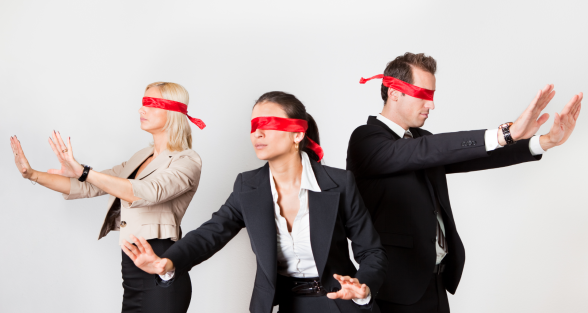Since the civil rights movement, we as a country have been enmeshed in a struggle to understand how to move forward from our history of race motivated hatred, bigotry, and oppression. Today, many people (particularly those people who are privileged enough to be white), adopt a feeling that if we could all just stop thinking about race and stop judging each other on race, then all these problems would disappear and we wouldn’t have to worry about racism anymore.
The concept of color blindness has been around for some time now. This is the idea that we should not even see what people look like, what color they are, but simply treat them as human beings. On some level this is a nice idea. It rests on the desire to put the past behind us. Unfortunately for us, the past is not really gone at all and it affects the lives of every person in the United States today.
The first reason that color blindness is an unhelpful attitude is that it ignores the fact that historical prejudices have left large sections of the black population of America in poverty, without jobs, incarcerated, and otherwise disenfranchised. These cycles of poverty reinforce themselves. In a recent book written by Mahzarin Banaji, the concept of modern prejudice was revealed to be more about helping those with connections to you. Because people of color have traditionally been denied connections to powerful institutions, they don’t benefit from connections and personal favors in the way that many white Americans do.
In addition to these historical cycles of poverty, color blindness ignores the fact that many prejudices are still deeply held and that race does matter, particularly for people of color. African-Americans are incarcerated at much higher rates than their white peers, and are often given harsher sentences. Things like stereotype bias (the tendency of an individual from a stereotyped demographic to perform more poorly in testing when reminded of a stereotype) can hold back individuals of color by affecting their performance in traditionally white fields like math and science. Subtle types of bias exist that we may deny are even at play. In a sociolinguistic study, researcher Anita Henderson found that hiring managers were more likely to hire individuals who phonetically and syntactically sounded white. John Baugh conducted research which showed that individuals who spoke with an African-American speech pattern were more likely to be denied housing. By promoting color blindness, we ignore the fact that life has been made more difficult for individuals of color explicitly because of their color. We erase those experiences and do nothing to help individuals recover from them.
Overall the largest problem with color blindness is that it is passive. The forces that have created the race segregation and discrimination in our country for so long are far from passive. They have been as active as can be in the form of laws, community enforcement, segregation in education, lack of voting rights, and hundreds of other things. Unless we actively step up to fight those things which have served to push a large number of people in our country downwards, we are perpetuating the problem. Sitting idly by while others struggle to get out of the mess that we helped to make for them is the same as continuing to hold them down.
As Malcolm X said “You don’t stick a knife in a man’s back nine inches and then pull it out six inches and say you’re making progress.” We need to actively work to take the knife out.

[…] Social Justice 101: Color Blindness […]
Does your blog have a contact page? I’m having a tough time locating it but, I’d like to shoot you an email. I’ve got some recommendations for your blog you might be interested in hearing. Either way, great site and I look forward to seeing it improve over time.
If you look at the Let Me Introduce Myself page it has some contact information.